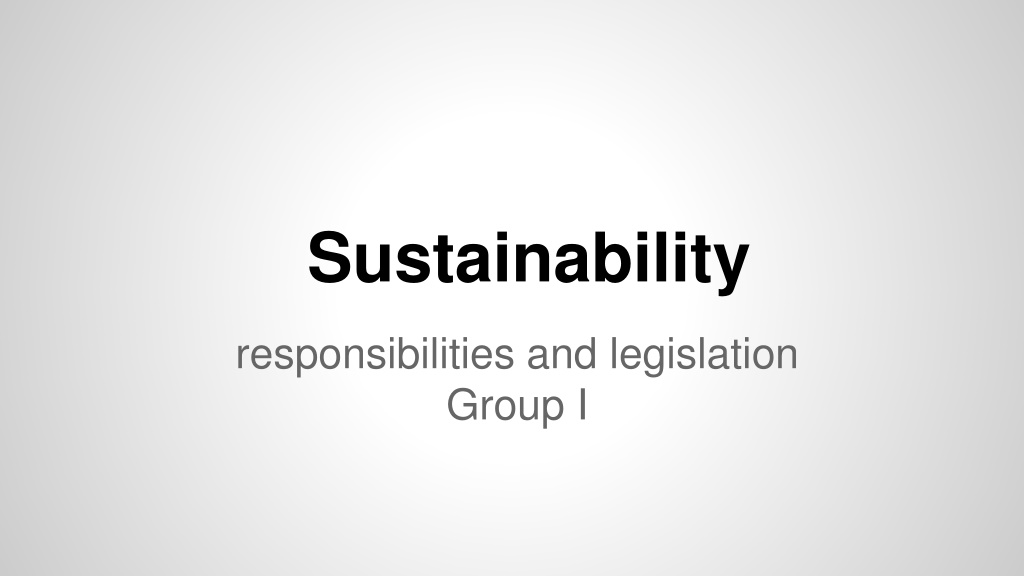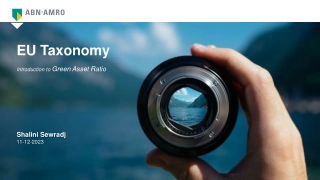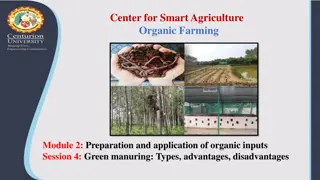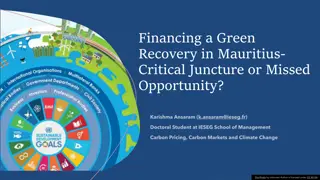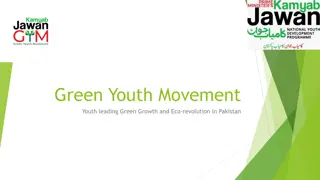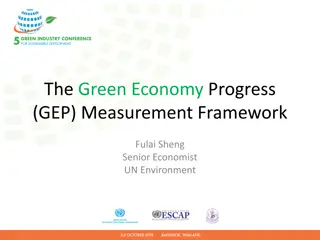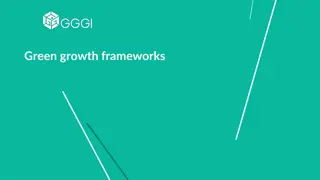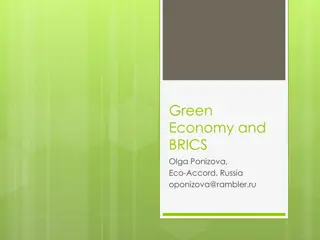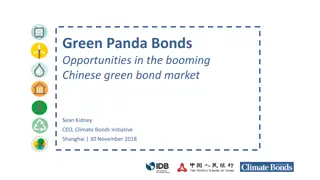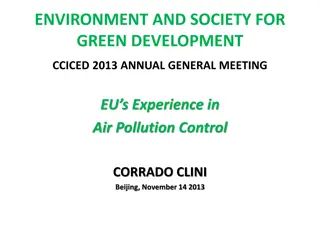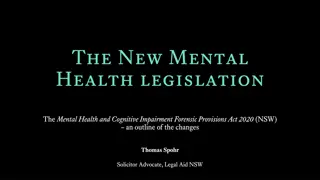Understanding Green IT: Responsibilities, Legislation, and Impact
Exploring the intersection of sustainability, IT operations, and legal obligations, this content delves into the repercussions of neglecting sustainable practices, such as global warming and energy poverty. It highlights the carbon footprint of IT equipment and the necessity of addressing environmental concerns in the digital age. The legal aspect is discussed, including the Climate Change Act of 2008 in the UK, emphasizing the commitment to reducing carbon emissions for a sustainable future.
Download Presentation

Please find below an Image/Link to download the presentation.
The content on the website is provided AS IS for your information and personal use only. It may not be sold, licensed, or shared on other websites without obtaining consent from the author. Download presentation by click this link. If you encounter any issues during the download, it is possible that the publisher has removed the file from their server.
E N D
Presentation Transcript
Sustainability responsibilities and legislation Group I
Sabin Marcu Tianyu Zhou
What will happen without sustainability
Global Warming Sea level will increase because of ice melting. Data shows that from 1993, the sea level increase around 3.3 mm per year. It will bring problems to people s life and the ecosystem
Can IT cause global warming? Of course it can! IT system need to run by using electricity and most of the electricity is produced by burning fossil fuels. Can anyone guess how many tons of CO2 our university produce every year?
Just a general introduce For every year: each server produces 8 tons of CO2 each PC and laptop produces 4 tons of CO2 each printers and photocopiers produces 10 tons of CO2 each router produces 20 tons of CO2 each Ethernet switch produces 5 tons of CO2
Energy Poverty Most of the traditional energy is nonrenewable, so after intensive consumption of energy, there will be a shortage of resources. Such as fossil fuels (oil, coal, natural gasses).
Back to IT Each IT product need electricity which is produced by burning of fossil fuels. To produce IT products, we need metal and ore, especially silicon. To deal with the old PC, we also require special staff.
Climate Change Act (2008) Act of the Parliament of the United Kingdom The goal is to have 80% lower carbon emissions (than 1990) for all six Kyoto greenhouse gases by 2050 Based on the Private Member s Bill (2005) Aided by the Climate Change and Sustainable Energy Act (2006)
CRC Energy Efficiency Scheme CRC is a scheme designed to reduce emissions and encourages organisations to develop energy management strategies. Organisations that meet the qualification criteria (over 6000 MWh per year) are required to participate, and must buy allowances for every tonne of carbon they emit. ( 12 for each tonne) It is basically forcing companies to either reduce energy usage, and in turn, CO2emissions, or pay for each tonne produced. Considering our numbers earlier, an estimate of payment can be quite high.
WEEE (Waste Electrical and Electronic Equipment Directive) European Law since February 2003 Sets collection, recycling and recovery targets for electrical goods Minimum rate of 4kg / head of population / year by 2009 The 3 Rs : reduce, reuse, recycle.
RoHS (Restriction of Hazardous Substances Directive) European Law since February 2003 Restricts the use of six hazardous materials in the manufacture of various types of electronic and electrical equipment
The materials restricted are : 1. Lead (Pb) 2. Mercury (Hg) 3. Cadmium (Cd) 4. Hexavalent chromium (Cr6+) 5. Polybrominated biphenyls (PBB) 6. Polybrominated diphenyl ether (PBDE) The maximum permitted concentrations of these materials is 0.1% (or 0.01% for cadmium) in each homogeneous material. This means that any object can contain a lot more than 0.1% concentration of any such materials.
ISO 14001 and IEEE 1680 ISO 14001 maps out a framework that a company or organization can follow to set up an effective environmental management system. Its main aim is to assist companies in continually improving their environmental performance, complying with any applicable legislation (see CRC) at the same time. IEEE 1680 is a standard set by IEEE for the environmental performance criteria for desktop computers, notebook computers, and monitors. It is a standard for green computing at desktop level.
EN 16001 and ISO 50001 EN 16001 is an European Union standard elaborated and published on the 1st of July 2009 Its primary objective is diminishing the emissions of greenhouse gasses. Based on EN 16001 (and others), ISO 50001 was released in June 2011 Is an upgrade on ISO 140001 and ISO 9100 However, while ISO 140001 focuses on environmental impacts of an organisation, ISO 50001 focuses on energy efficiency Also, ISO 50001 helps in reducing energy costs for companies (in turn, reducing CO2pollution)
